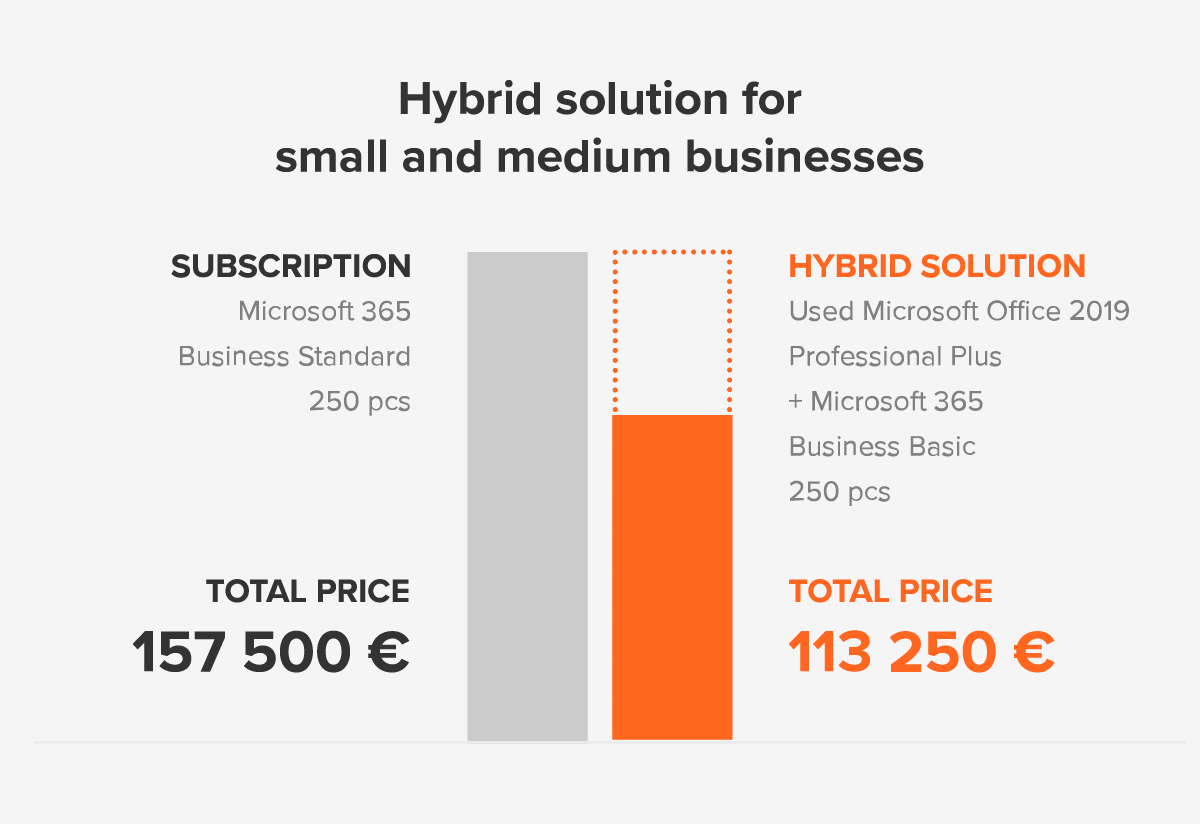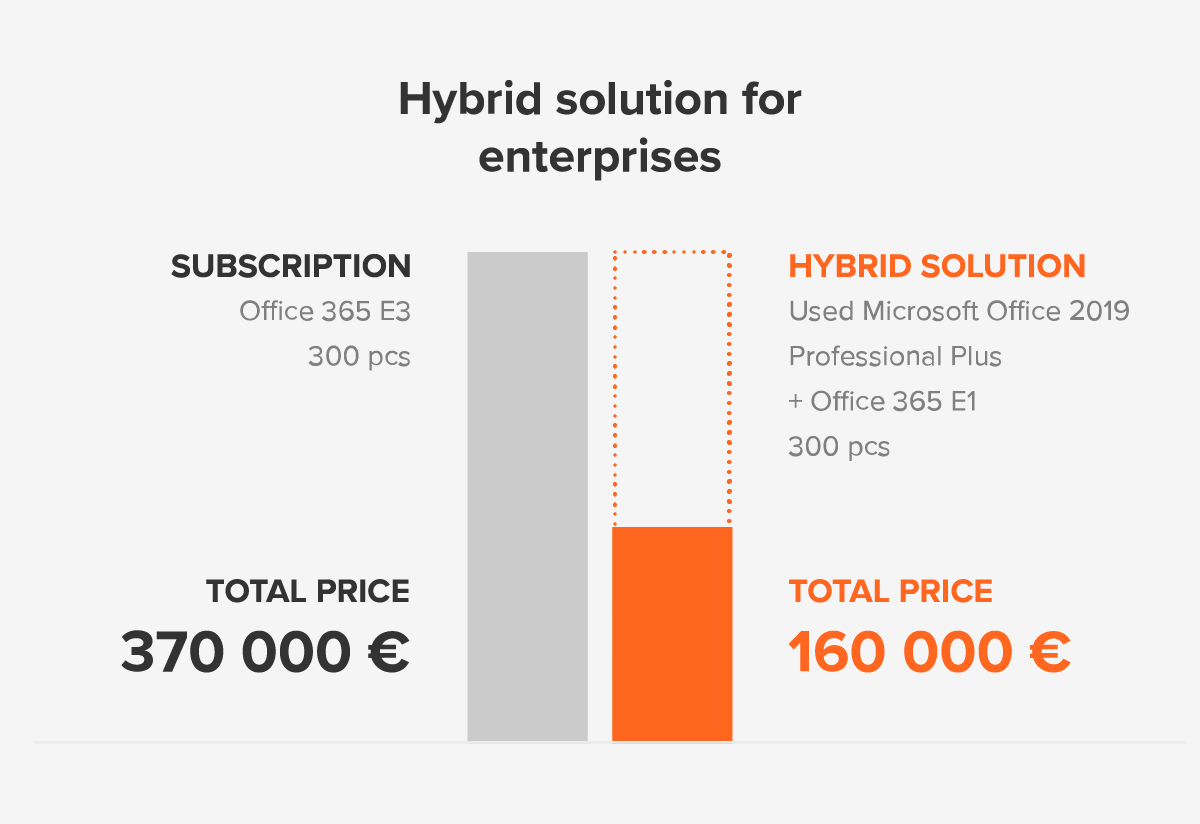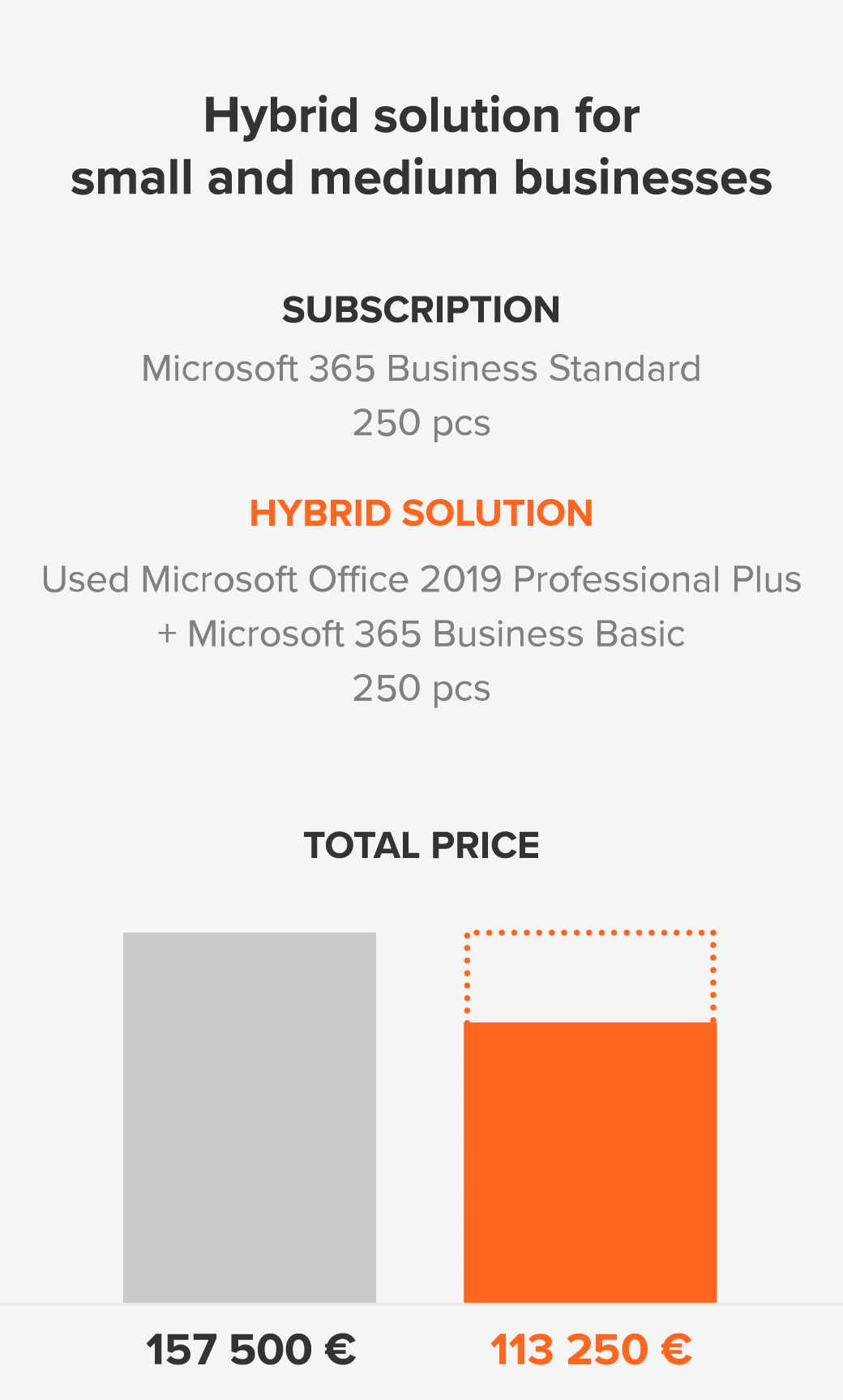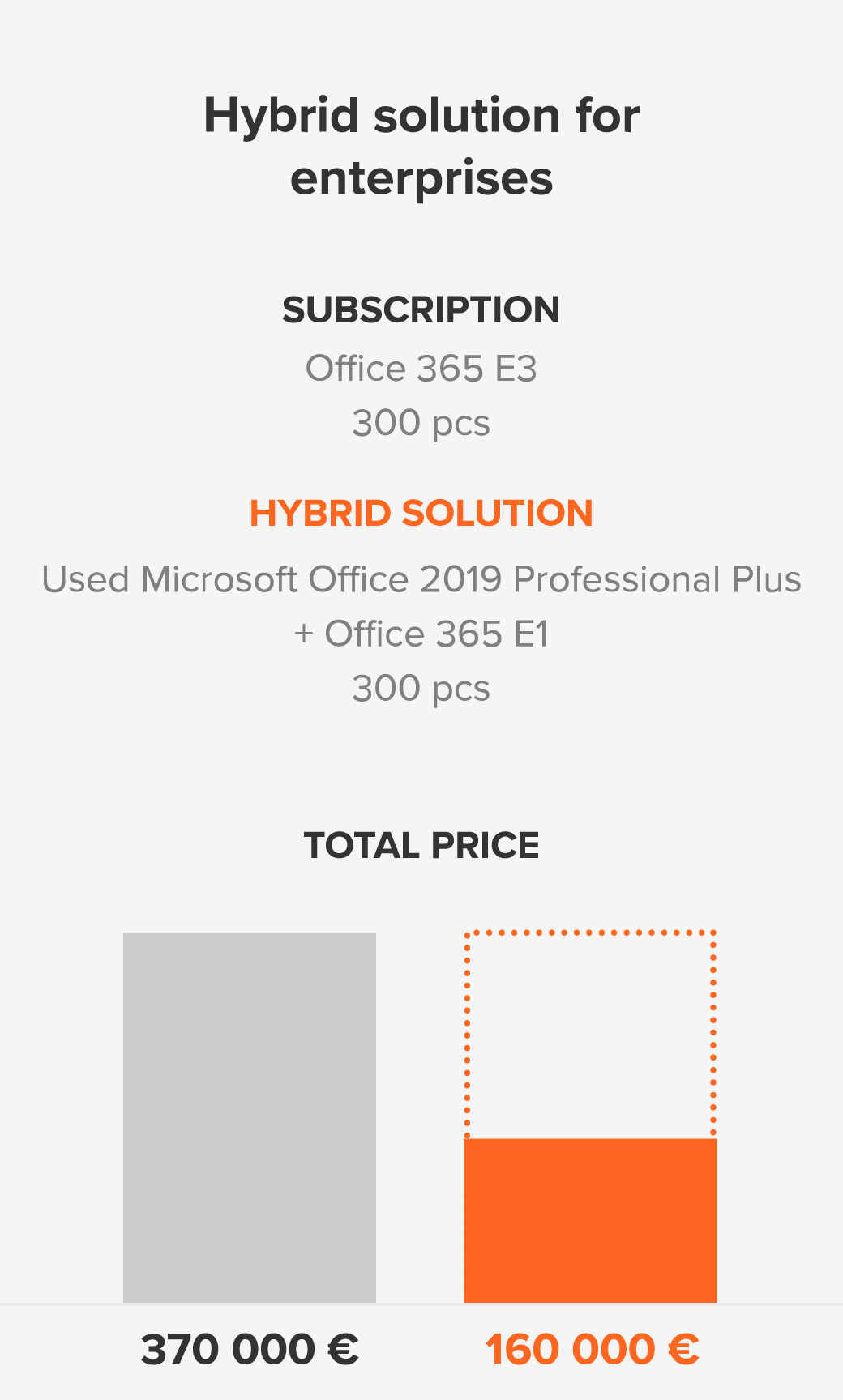Why should your company pay for unnecessary or even unwanted features every year? Optimize your software assets and stop excessive spending on subscriptions with hybrid solutions.
What is a hybrid solution?
A hybrid solution is a combination of subscription-based cloud services and perpetual, on-premises software products. It allows organizations to adjust their expenses for software (and sometimes even hardware) while still getting all the features and services they need to conduct their operations.
In Forscope, we can provide a rare mix of cloud-based subscription services and perpetual used software products to our customers. This type of hybrid solution can bring significant benefits to companies operating in both private and public sectors, allowing them to introduce more cost-effective software solutions into their organizations.
Price comparisons: subscription vs hybrid solutions over 5 years
Please go to the next page.
last update: March 2022
When can your company benefit from hybrid solutions?
- Creating a new IT environment – when starting preparations for a new IT infrastructure, decision makers are often convinced that subscription-based cloud products are the obligatory choice, often due to how software is marketed by manufacturers nowadays. However, upon deeper analysis, many organizations find out that a combination of cloud services with on-site perpetual software are more beneficial economically and can be more practical when it comes to workflow, accessibility and security.
- Optimizing an existing environment – many organizations rely on specific, already established conditions which they are reluctant to part with or simply cannot abandon for technical reasons. However, upon closer scrutiny there are often programs, features and services that are revealed as unused or unnecessary. In such cases the existing infrastructure can be improved and expenses can be cut down by the inclusion of either perpetual or subscription products, depending on the case.
For example:
- A SaaS-based cloud structure with many redundant features → analysis of the software assets with the goal of downsizing the subscription, reducing the shelfware and/or replacing certain components with perpetual products.
- An existing on-premises structure with emerging cloud services needs → analysis of the new needs and existing software assets in order to procure a cloud solution that is complimentary to the existing structure, instead of entirely replacing it.
- Migration to home office and remote work – instead of switching abruptly from perpetual products to the SaaS model to accommodate remote work requirements, companies can employ a hybrid solution. This way they can delegate only selected services to the cloud (such as VoIP services and shared storage for documents, for example) and still retain on-premises software for the majority of workflows and processes. As a result, the transition to remote work will be significantly less disruptive, as employees will have to adapt to only a few changes instead of a global transformation.
- Improving data security – when using subscription products, organizations do not manage or control the underlying cloud infrastructure, including networks, servers, operating systems, storage, and application capabilities (apart from user-specific configuration settings) – in the case of the SaaS model, they have to rely on the environment that is delivered by the provider.
With a hybrid solution, key assets containing sensitive data can be kept on-premises (and offline, if necessary), without any connection to the cloud environment. - Backup – relying entirely on cloud services for data storage and productivity can backfire if said services become inaccessible (e.g. due to technical issues or missed payments). This can result in significant drawbacks and losses even with temporary disconnection. Setting up a hybrid solution can mitigate the effects of both cloud and on-premise outages of various nature, helping organizations to react and adapt more easily to such issues.
Opting in for a hybrid solution leads to significant savings in comparison to a subscription-only solution, and allows IT departments to move selected functionalities and tools to the cloud while retaining control over the organization’s on-premise infrastructure, software, and data.




